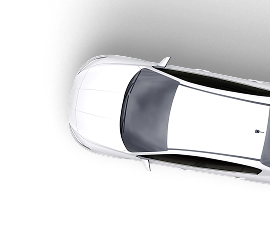Trade to trade car marketplace


Trade-only marketplace
Flexible selling options
Maximise your profits
Looking for the cheapest way to buy a car in the UK? This guide breaks down five proven methods, showing you exactly where to find the best deals, what to watch out for and how to avoid costly mistakes.
Last updated: 4th August, 2025

Listen to this story
Buying a car doesn’t have to drain your savings. In fact, with the right approach, you can get a perfectly reliable vehicle at a fraction of what most people spend.
This guide breaks down the most affordable ways to buy a car in the UK, whether you're after a cheap runaround, a flip opportunity or just want to avoid overpaying. We’ll cover your options, highlight the lowest-cost channels, and show you what to watch out for so you don’t waste money or end up with a dud.
| Method | Avg. price | Risk level | Best for… | Common platforms |
|---|---|---|---|---|
| Physical car auctions | £500 to £50,000+ | High | Confident bidders, traders | BCA, Manheim, Copart |
| Cat S/N (already repaired) | 20% to 40 below RRP | Medium | Budget buyers, decent condition | AutoTrader, Copart, eBay |
| Private sale (Facebook/Gumtree) | £1,000 to £10,000+ | Medium | Deal hunters, first-time buyers | Facebook Marketplace, Gumtree |
| Damaged car (unrepaired) | £300 to £2,000 | Very High | DIYers, trade-savvy buyers | Trader.co.uk, Copart |
| Gov/charity car schemes | £0 to £2,500 | Low | Low-income drivers, specific needs | Motability, local council, Turn2us |
Car auctions offer some of the lowest prices you’ll find anywhere in the UK market. They're best suited to confident, experienced buyers who don’t mind doing their own checks and moving quickly. If you’re willing to accept a bit of risk, auctions can save you hundreds or even thousands on the same car you'd find at a dealership.
Auction vehicles often come from trade-ins, repossessions, lease returns, or fleet clearances. Sellers are motivated to move them fast—so prices tend to be far below retail.
Some of the savings come from:
However, this depends on the exact make, model and year of the car and what people are willing to bid that day.
The most trusted and well-known auction sites in the UK include:
It’s worth mentioning that many auction sites in the UK (including our own Trader.co.uk) are exclusive to registered motor traders. The reason for this is that auctions are designed to move stock quickly at wholesale prices. By limiting access to traders, sellers avoid retail-level negotiations and ensure the people buying the cars understand conditions and resale value.
For private buyers, public auctions on sites like Copart and Wilsons Auctions are usually the most accessible entry point.
Auction cars are sold as seen, usually with no warranty or returns. You’ll need to do your due diligence beforehand.
To reduce the risk of buying something with lots of issues:
If you know what to look for (or bring someone who does), auctions can be one of the smartest ways to buy cheap.
Buying a Category S or Category N car that’s already been repaired is one of the easiest ways to save 20% to 40% compared to similar clean-title models. It’s ideal for budget-conscious buyers who want a good-looking, roadworthy car at a discount and don’t mind a bit of history on the logbook. If the repair work was solid, it’s a good deal for you.
Cat S and Cat N cars are cars that were previously written off by insurers but later repaired and returned to the road:
Both can legally return to the road, but they’ll always carry that write-off label in the V5C.
Insurers often write off cars based on repair cost vs. market value, not just severity of damage. That means a car with relatively minor damage can be declared a total loss. Once fixed, these cars lose 20% to 40% of their value simply because of the stigma surrounding them.
Assuming the repairs were done well and documented, the buyers get the benefit. Also, dealers rarely stock them, so competition is lower. And you’re able to get your hands on a newer, better-specced car for the same price as an older clean-title version.
Award-winning CEO driving growth and social impact across automotive, recycling, and technology-led enterprise platforms.
We see a lot of buyers overlook repaired Cat S and Cat N cars because of the stigma, but the truth is that many have been professionally restored to a high standard. If you’re willing to do the due diligence, these vehicles can offer unbeatable value, which is why we deal so heavily in them.
Legal to drive? Yes, once repaired (and re-registered if Cat S).
MOT required? Same as any other car — yes, if it’s over three years old.
Insurance and resale are where things get complicated. Some, not all, insurers will cover write-offs and you will probably pay a higher premium even with a well-documented repair history.
You’ll also need to disclose the category to future buyers, and resale value will always be lower.
To stay safe, ask for before-and-after photos, repair receipts and confirmation of DVLA re-registration (for Cat S). Before buying, run a full HPI check to confirm the category and mileage. Avoid buying if the seller won’t show you the paperwork.
Buying a used car directly from a private seller is one of the most accessible and flexible ways to save money. It’s ideal for everyday drivers, students and first-time buyers who want to avoid dealership markups and get more car for their money.
If you’re willing to do your own checks, private sales offer incredible value. But you’ll need to stay sharp because there are lots of dodgy sellers, scams and people potentially trying to hurt you.
The biggest draw is price. Private sellers don’t have overhead costs, warranties or sales targets, so they usually list their cars for 10% to 30% less than dealerships.
You’re also more likely to:
Unlike auctions and write-offs, many private sales involve well-kept, roadworthy cars. You’re not just scraping the bottom of the barrel. With the right seller, you can often get a full service history and a straightforward sale with no extra fees.
Platforms like Facebook Marketplace and Gumtree make it easy to browse local listings and message sellers instantly. You can filter by location, mileage, MOT status, and more.
Here’s where things get tricky—private sales offer no legal protection. Once money changes hands, you're on your own. So due diligence isn’t optional.
Here’s what to look for (and avoid):
If you can, bring someone with you if you’re not confident. Or hire a mobile mechanic to inspect the car on the spot. Many offer same-day checks for £100 or less, which will save you thousands in potential hidden issues.
The same way you’d buy a fixer-upper house, either to use or flip, buying a damaged car is one way to get a vehicle for significantly less than retail. This option suits experienced buyers, DIYers and people with access to trusted mechanics. But it’s not without its headaches.
Accident-damaged write-offs are where you’ll find the best deals, but you’ll have more work to do on them to get them roadworthy. Some private sellers will also sell non-written-off vehicles at a steep discount if they’ve got mechanical problems, cosmetic issues or defects. A lot of these are easy fixes for a pro, but not worth the hassle for the seller.
If you or someone you trust can handle the repairs, you’ll save thousands. That said, you’ll have to cost everything: parts, labour, repainting, inspection fees and any tools or equipment you’ll need.
If you aren’t a trader who’s been doing this for years, always get a second opinion. This applies even if you think you’re 100% sure how deep the damage goes. What looks like simple cosmetic damage could be hiding something internally.


Copart UK and Synetiq are the two biggest salvage auction platforms. eBay and Gumtree sometimes list Cat S/N cars, but proceed with extra caution.
You can also find deals through trade-only auctions if you have access, or via direct contact with insurance companies that occasionally offload damaged stock.
When you buy through Trader.co.uk, you’re getting a private, pre-vetted network where only approved auto traders can access listings. You're not wading through dodgy sellers and low-effort listings like on public marketplaces. Every MOT failure, accident-damaged car, and Cat S/N write-off comes from a source that’s been screened. This eliminates 99% of the risk.
Repairing a damaged car (especially a write-off) isn’t as simple as fixing the car and driving off. You’ll need to:
If you're not careful, this kind of purchase becomes a huge money pit. But if you know what you’re doing or love fixing cars yourself, it’s one of the most cost-effective ways to own a car outright
If you’re on a low income or have mobility needs, government and charity-backed car schemes are your best chance at getting a reliable vehicle for next to nothing. These programs aren’t widely advertised, but they do exist, particularly in rural areas where public transport is limited.
Some schemes offer free or low-cost cars to help people get to work, medical appointments or education. Others provide heavily discounted vehicles through partner garages or donation networks, but the upper cap for funding is almost always somewhere around £2,000 to £2,500.
Examples include:
Even if the car itself is free or discounted, insurance, tax, MOT and repairs still fall on you. Some charity-donated vehicles haven’t been used in months and might need new tyres, a battery or minor servicing before they’re road-ready.
Be realistic about upfront servicing and ongoing running costs. Don’t blow your last £300 on insurance if the car needs work next week.
There are four ways you can save even more money when buying a car in the UK:
Remember that a lot of the best schemes are local. If you’re only searching nationally, you’re going to miss out on some of the best opportunities available to you.
Government and charity programmes don’t follow the same seasonal patterns as dealers, but there are still smart times to act:
It’s easy to let your guard down when something’s “free” and backed by a reputable organisation but treating it like any other used car purchase is how you stay protected. So, even if the car is free or heavily discounted, the paperwork matters:
Yes, you can, but it’s not as straightforward as financing through a dealership. When you apply for private sale finance, the lender will need to run extra checks on the vehicle. These checks confirm:
In short, the finance company wants to make sure you’re not about to borrow money to buy someone else’s problem.
Also, be aware: when buying privately, you don’t get dealer-level buyer protections. If something goes wrong — faulty engine, undisclosed crash damage, dodgy paperwork — you’re on the hook. If you use finance, you’ll be stuck with loan repayments plus interest on a car you can’t use or resell.
Unless you’re 100% sure about the car, it’s safer to either buy outright or finance through a seller who provides proper protections.
Don’t buy a car without a V5C. Period. The DVLA says this clearly, and we’re repeating it.
The V5C (logbook) proves who has the legal right to sell the car. Without it, you have no idea whether it’s stolen or not. Not to mention, you won’t be able to tax it without the V5C, which means you can’t drive it, either.
If the seller claims they “lost it”, ask them to request a replacement online. It only costs £25 and arrives within 5 working days. That’s not a big ask if they’re legit.
If you decide to go against our (and the DVLA’s) warning, you can get a new logbook after purchasing the vehicle by filling out form V62 and including the full sale details, your signature and the seller’s signature.
Cat S cars have suffered structural damage, meaning the chassis or frame was compromised. If a professional shop rebuilt it to manufacturer standards and used proper parts, you might never notice a difference. But if the repairs were rushed, done cheaply or cut corners, problems can emerge months or years later.
These are just a few of the issues you might run into. So, it all comes down to how informed you are on the car you’re buying. With a full repair history, before-and-after photos, an HPI Check and a third-party inspection (RAC, AA or local mechanic), you should be okay.
For traders, it’s often about margins. If they can buy a Cat S or N car cheap, fix it quickly, and sell it at a profit, then yes. It’s worth it.
For DIYers and hobbyists, the personal satisfaction of restoring a car, learning something or building a project might make it worth it. But be real: it’s usually not the best financial decision once you factor in time, tools, and parts.
Unless you have access to discounted repairs or do the work yourself, most people are better off buying something already repaired.
Sometimes.
Major auction platforms like BCA, Manheim and Copart use grading systems to give you a rough idea of the vehicle’s condition. They typically avoid listing total junk because it reflects badly on them and deters repeat buyers.
That said, cars are sold as seen with no warranty and no comeback if something breaks the next day. You’ll need to be skilled at spotting mechanical red flags quickly, interpreting auction grading reports and knowing when to walk away.
If you’re not confident doing this, bring someone who is.
Once you win the bid and pay the fees, here’s what happens next:
The cheapest way to buy a car isn’t just about price. It’s about getting the best value without getting burned.
From auctions and Cat S/N deals to private sellers and charity schemes, there are plenty of ways to save thousands without settling for junk. But the key is that you need to do the legwork. Cheap cars come with trade-offs: less protection, greater risk and fewer guarantees.
So be cautious. Run every check. Ask the awkward questions. And if something feels off, walk away. There’s always another deal.

